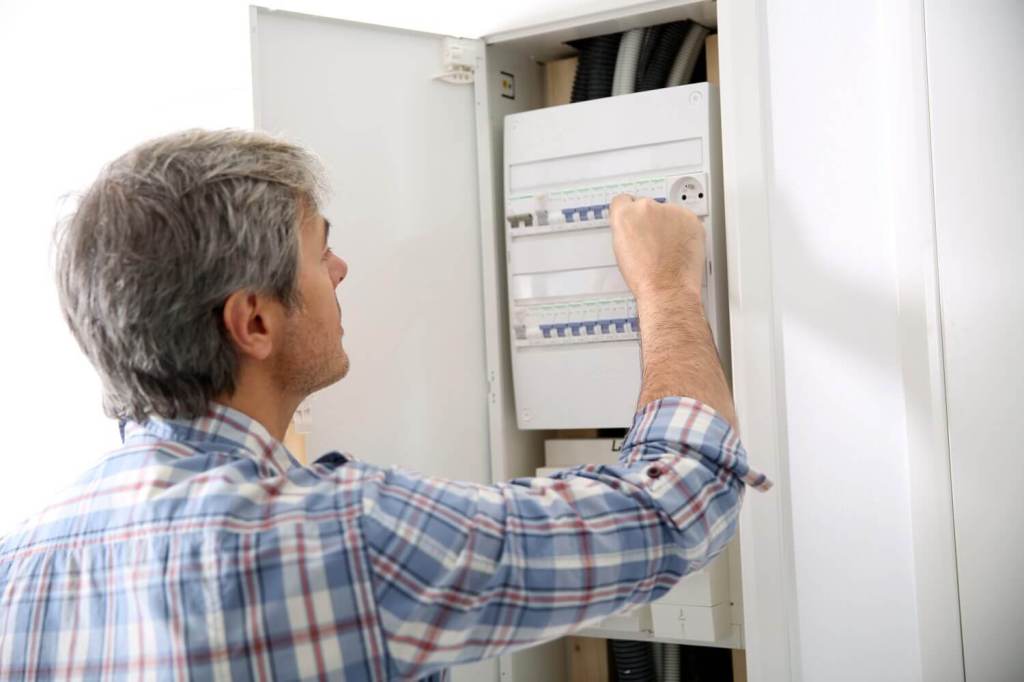Preparing for the start of a new tenancy can be time-consuming and stressful for landlords.
Not only do you need to make sure your property is appealing and comfortable for tenants, there are also a rising number of legal obligations to meet.
Whether you’re an experienced landlord, or an accidental first-time landlord just starting out, our pre-tenancy landlord checklist covers 12 key things you need to do when renting out a property in England to make sure it’s ready for tenants and complies with the law.
Landlord checklist – 12 steps to preparing for a tenancy
Follow our checklist below to get started with your new tenancy:
- Furniture and furnishings fire safety regulations
- Electrical safety checks
- Landlord licensing
- Energy efficiency rules and EPC ratings for rental properties
- Gas safety certificates for landlords
- Carbon monoxide detectors and smoke alarms in rental properties
- Landlord insurance
- Referencing and Right to Rent
- Tenancy agreement
- Deposit protection
- How to rent and Prescribed Information
- Have you completed a rental inventory?
1. Furniture and furnishings fire safety regulations
All landlords have to meet the Furniture and Furnishings (Fire Safety) Regulations.
These rules mean upholstered furniture you provide such as beds, chairs, and sofas will need a fire resistant label.
Loose furniture and upholstery like bed covers, curtains, and carpets isn’t covered by the regulations, but it’s important to make sure everything you provide is fire safe.
The rules don’t extend to items the tenant brings to the property, but it’s worth discussing fire safety when they move in.
Our fire safety regulations guide has further information on how you can keep your rental property fire safe.
2. Electrical safety checks
To make sure tenants are living in safe conditions, landlords have to comply with the Electrical Safety Standards in the Private Rented Sector (England) Regulations.
To follow these rules, first introduced in 2020, you need to carry out electrical safety checks at least once every five years.
The checks need to be completed by a registered tradesperson and you’ll need to provide a copy of the Electrical Installation Condition Report (EICR) to new and existing renters.
Professionals completing electrical checks of your property will be:
- looking at fuse boxes, wiring, and sockets
- checking for overloaded installations
- monitoring for fire hazards
- making sure there are no electric shock risks
Read our full guide on electrical safety certificates to make sure you’re compliant.
3. Landlord licensing
One of the first things you’ll need to do when letting your property is check with your local authority whether it needs to be licensed.
Your property may need a selective or additional licence – you can read more about the different types of licensing and whether you need a licence on your local council’s website.
What’s more, if your property is an HMO, it’s likely it’ll need a licence. HMO landlords have extra responsibilities as they’re letting larger properties to more people – read our HMO guide to find out more about renting out an HMO.
4. Energy efficiency rules and EPC ratings for rental properties
Before you let your property, you’ll need to get an Energy Performance Certificate (EPC). They last for ten years and explain the energy efficiency of your property and how to save money on bills.
You’ll need to give a copy of a valid EPC to tenants when they move in. If you don’t, you could be fined and you may not be able to evict tenants legally.
Since 2015, landlords have also had to meet Minimum Energy Efficiency Standards (MEES). It’s illegal to let your property if it has an EPC rating of F or G.
Read our guide to EPC ratings to find out more about MEES and how to improve the energy efficiency of your property.

5. Gas safety certificates for landlords
Similar to electrical safety checks, landlords need to carry out gas safety checks once a year and give a copy of the gas safety certificate to tenants.
Here’s an overview of what you need to do:
- gas safety checks will need to be carried out by a Gas Safe registered engineer
- once completed, the certificate should be provided to existing tenants within 28 days
- you’ll need to give new tenants a copy of the gas safety certificate when they move in
Read our in-depth guide to getting a gas safety certificate to get up to speed with everything you need to know about gas safety in your rental property.
6. Carbon monoxide detectors and smoke alarms in rental properties
Since 2015, it’s been a legal requirement for landlords to have at least one smoke alarm installed on every floor of their rental property.
They also need to have a carbon monoxide detector in any room where there is a solid fuel burning appliance such as a wood burning stove or coal fire.
All alarms must be tested before the start of each new tenancy and there are significant fines for landlords who don’t comply with these rules.
Read our guide to smoke alarm requirements for everything you need to know about smoke alarms and carbon monoxide detectors, from where to put them, to the penalty fines for non-compliance.
7. Landlord insurance
Unlike most of the other things you need to sort out pre-tenancy, landlord insurance is not a legal requirement.
However, if you have a buy-to-let mortgage, it’s likely your lender will want you to have landlord insurance in place. It’s important to note that standard home insurance is unlikely to be seen as adequate cover if you’re letting your property due to the extra risks involved.
Having a specialist landlord insurance policy in place can make sure your property and finances are protected.
We’ve answered key questions such as whether you need landlord insurance if you have building insurance and whether you need landlord insurance if you’re renting to family members as part of our landlord insurance FAQ guide.
8. Referencing and Right to Rent
Once your property is ready to let and you start receiving applications from tenants, you’ll need to screen them effectively to help you make your final decision.
Our comprehensive guide to tenant referencing covers everything you need to know about this part of the pre-tenancy process. We’ve also got a guide to choosing the right tenants, covering all the extra checks you can make.
As part of the screening process, it’s also a legal requirement to check the immigration status of prospective tenants to make sure they have the right to rent in the UK.
9. Tenancy agreement
Once you know which tenant(s) you want to live in your property, you’ll need to get them to sign a tenancy agreement.
A tenancy agreement is a contract between you and your tenants, setting out the details of all the conditions of the tenancy, such as whether you accept subletting or pets.
It will include key information, including:
- how much the rent is and when it’s due
- your contact details and the address of the property
- what the landlord is responsible for and what the tenant is responsible for
- when the tenancy starts and how long it lasts
10. Deposit protection
If you take a security deposit from your new tenants, it’ll need to be protected with a government-approved scheme in 30 days.
There are three approved tenancy deposit protection schemes, offering two types of deposit protection called custodial and insured.
Read our guide to the tenancy deposit scheme to find out which scheme is best for you and the maximum security deposit you can take from tenants.
11. How to rent and Prescribed Information
At the start of each new tenancy, you’ll need to give tenants a copy of the government’s How to rent guide.
It’s a checklist for renting in England, giving tenants information on what to look out for, what to do if something goes wrong during their tenancy, and what to do at the end of a tenancy.
Once you’ve completed deposit registration, you’ll need to give them the Prescribed Information, which includes:
- the amount of deposit taken
- the property address
- details of the tenancy deposit scheme being used
- contact details of landlords, tenants, and any third parties involved with the deposit
Failure to carry out these steps could see you hit with a significant fine and it could invalidate any future eviction notices.
12. Have you completed a rental inventory?
When your tenants are ready to move in, it’s important that you carry out an inventory.
Also known as a check-in or schedule of condition, an inventory details the condition and contents of your property at the start of the tenancy. At the end of the contract, you’ll need to do an inventory check-out to make a comparison.
A thorough landlord inventory gives you extra protection and could be useful if you need evidence for deposit deductions or a dispute.
Inventories can be done by independent clerks, letting agents, or by landlords themselves. It’s important for both parties that the inventory is detailed and impartial.
Our guide to landlord inventories gives further information on where to get an inventory template and what you need to do at the end of the tenancy.
Working towards a successful tenancy
Using this checklist as a guide can help you prepare for a successful and long-term tenancy.
Once the tenancy is underway, you’ll need to keep an eye on any repairs requests and carry out regular property inspections.
At the end of the contract, you’ll need to do an inventory check-out, complete any redecoration tasks, and start preparing for the next tenancy.
Was this pre-tenancy checklist helpful? Let us know in the comments below.
Useful guides for buy-to-let landlords
Get set with tailored landlord cover
Over 200,000 UK landlord policies, a 9/10 customer rating and claims handled by an award-winning team. Looking to switch or start a new policy? Run a quick landlord insurance quote today.
